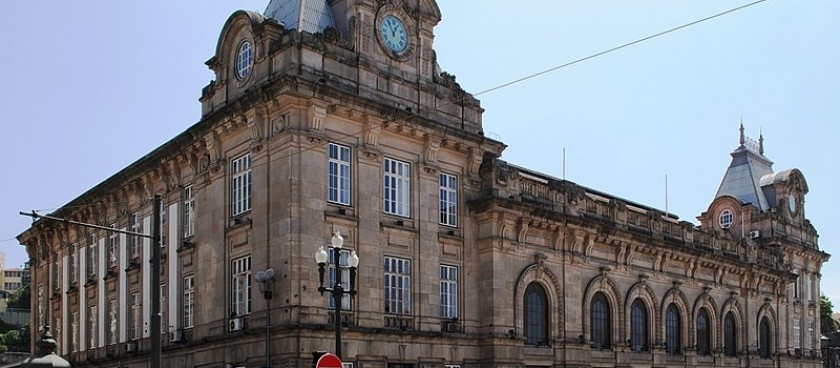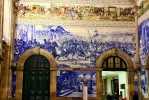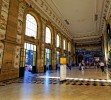- #PT14
- Praça de Almeida Garrett, 4000-069 Porto, Portugal
- +351707210220
- https://www.cp.pt/
- 41.1456637, -8.6106138 Copy to clipboard Copy
-
#Architectural Oddities
The name comes from a Benedictine monastery built on this site in the XVI century. The monastery was the victim of a fire in 1783, was later rebuilt and closed as a result of the liberal reform in 1892. In the context of the expansion of the railway system in Portugal, the monastery was demolished. In 1900, King Carlos I laid the first stone in the station building. The project was commissioned by the City of Porto to architect Jose Marques da Silva[pt], who designed the building under the influence of the French school of architecture.
The most notable feature of the interior of San Bento is the magnificent tiled panels in the station lobby. The first tiles were displayed on August 13, 1905.
This one of the most beautiful operating train stations in Europe is always full of tourists, even if they do not need to go some where by train. The reason is that the walls inside the building are decorated with traditional azuleju tiles, from which huge paintings are laid out. It took 20,000 tiles to cover the walls, which were hand-painted by the artist Georges Coles for three years.
You can visit the San Bento Train Station around the clock and for free.
The panels depict landscapes, ethnographic subjects, as well as historical characters and events, such as the knight Egash Monish [pt] and Alfonso VII Leon (XII century), the Battle of Arcos de Valdeves (1140), the arrival of King Joao I and Philippa of Lancaster in Porto (1387) and the conquest of Ceuta (1415).




